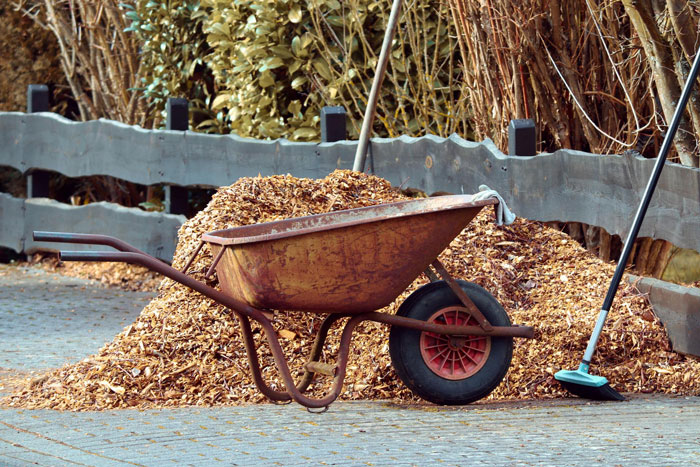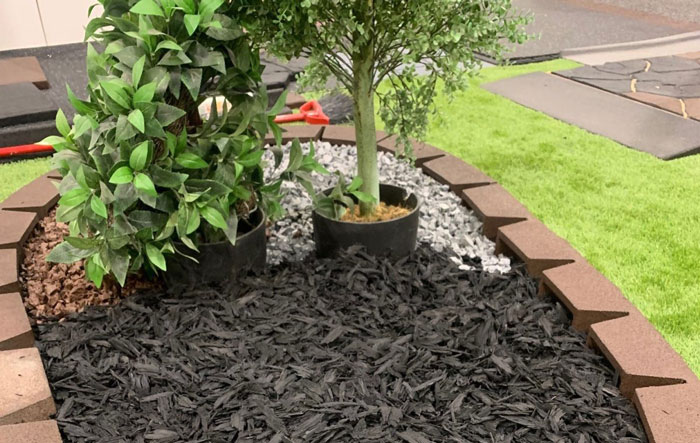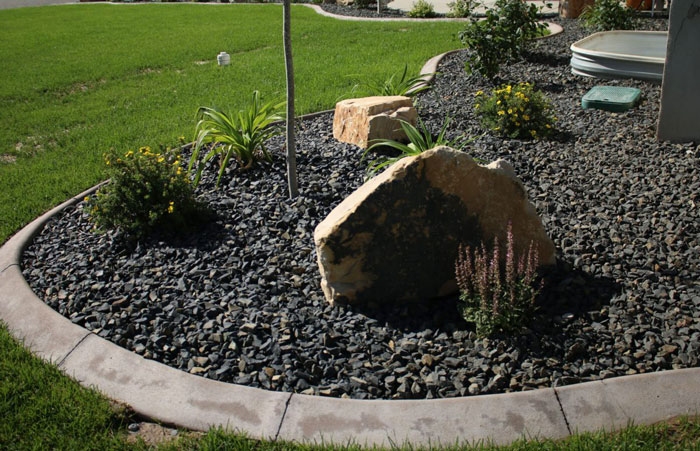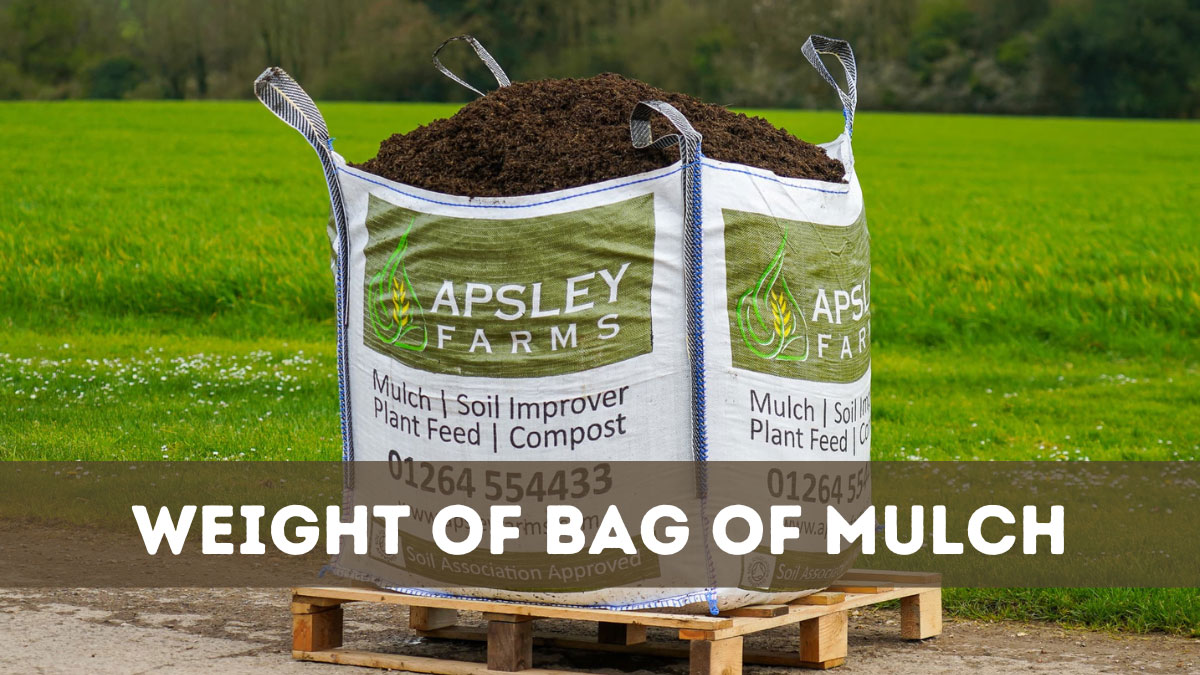Weight of Bag of Mulch: A Guide to Types and Coverage
Mulch plays a crucial role in sustainable landscaping by reducing water needs, eliminating herbicides, and improving soil health. However, if you’re planning a DIY project, knowing the weight of a mulch bag is vital. The weight varies significantly depending on the material, impacting both physical labor and shipping emissions.
Wood mulch, a popular choice for its sustainability, weighs an average of 34.9 pounds per bag. If you’re considering rock mulch, be prepared for an average weight of 43 pounds, which can be challenging to handle. On the lighter side, coconut mulch averages 24 pounds, offering a more manageable option. Each type of mulch has its pros and cons, and understanding these differences can help you make informed decisions for your landscaping needs.
Key Takeaways
- The weight of a mulch bag can significantly impact both transportation and application in landscaping projects, making it crucial to understand the variations among different mulch types.
- Wood mulch is a sustainable choice, averaging 34.9 pounds per bag, while rock mulch, heavier at around 43 pounds per bag, offers durable, long-term solutions.
- Rubber mulch provides a lightweight alternative, averaging 31.5 pounds, and is ideal for playgrounds due to its durability and impact absorption.
- Organic mulches, such as wood chips and coconut, enrich soil nutrients over time, while inorganic options like rubber and rock provide more permanent coverage.
- Calculating correct coverage area based on mulch type and depth ensures efficient use and prevents over- or under-purchasing, saving time and resources.
- Proper mulch application, considering area preparation, depth, and maintenance, maximizes benefits such as moisture retention, weed suppression, and soil quality improvement.
How Much Does a Bag of Mulch Weigh?
When planning landscaping projects, knowing the weight of mulch bags is crucial. Different materials impact the effort required for transportation and application.
Weight of Wood Mulch
Wood mulch typically comes in 2 cubic foot bags, weighing about 20-25 pounds when dry. Water absorption can increase this to 45-50 pounds. On average, wood mulch bags weigh around 34.9 pounds based on analysis. Since wood mulch is absorbent, choosing a dry day for application reduces effort. Wood types include shredded hardwood and pine bark nuggets, available in various colors like black, red, and brown.

Weight of Rubber Mulch
Rubber mulch offers a lighter alternative, weighing about 31.5 pounds on average per bag. A 0.8 cubic foot bag weighs roughly 23 pounds, while a 1.5 cubic foot bag reaches around 40 pounds. Despite its lower weight, rubber mulch is substantial and provides effective ground coverage without the common moisture retention issues of organic mulches.

Weight of Rock Mulch
Rock mulch stands out due to its density, with an average weight of 43 pounds per bag. Though heavier, it offers durability and requires less frequent replacement. Rock mulch is often chosen for areas needing stable, long-term solutions due to its resilience against weather conditions and minimal maintenance requirements.

Considerations for Choosing Mulch
When choosing mulch for your landscaping projects, you’ll want to consider various factors that impact both functionality and ease of use. Understanding the characteristics of each mulch type helps ensure that the selection aligns with your specific gardening needs.
Organic vs. Inorganic Mulch
Mulch can be classified as either organic or inorganic, each offering distinct benefits. Organic mulch includes materials like wood chips, straw, and bark, which decompose over time, enriching the soil with nutrients. This type is ideal if you’re focusing on improving soil health. However, it generally requires regular replenishment and may weigh less when dry but absorb moisture quickly, increasing its weight.
Inorganic mulch consists of materials such as rubber or rock. Rubber mulch is durable and lightweight, making it easy to handle and ideal for playgrounds. Rock mulch, heavier at around 43 pounds per bag, offers long-lasting coverage with minimal maintenance. It doesn’t decompose, providing a permanent solution in areas with harsh conditions.
Coverage and Application
The coverage area per mulch bag varies significantly, so it’s crucial to calculate your needs accurately before purchasing. A standard 2 cubic foot bag of wood mulch covers about 12 square feet at 2 inches deep. For larger areas, heavier options like rock mulch may require fewer replacements but are more challenging to distribute.
Proper application involves spreading mulch evenly across the designated area, ensuring a consistent depth that optimizes its benefits. For water conservation and weed control, aim for a depth of 2-4 inches. Consider using landscape fabric under the mulch to prolong its effectiveness and simplify future maintenance tasks.
By balancing factors such as durability, weight, and nutrient contribution, you can select the right mulch for each specific area, enhancing both the aesthetic and functional aspects of your landscaping efforts.
How Much Mulch Do You Need?
Determining the amount of mulch you need ensures effective coverage for your garden. Mulch not only enhances aesthetic appeal but also improves soil health by retaining moisture and suppressing weeds.
Calculating Coverage per Bag
A standard 2 cubic foot bag of mulch typically covers approximately 12 square feet at a depth of 2 inches. Adjust the depth according to your landscaping needs for optimal nutrient retention and water conservation. For example, increasing the depth to 3 inches decreases the coverage area to about 8 square feet. Straw mulch offers different coverage; a 2.5 cubic foot bag covers around 30 square feet at the recommended depth. Accurate calculations prevent under or over-purchasing, saving you time and resources.
Converting Bags to Cubic Yards
Converting bag volume to cubic yards simplifies purchases, especially for large areas. One cubic yard equals 27 cubic feet. For instance, a single cubic yard of mulch, such as wood or rubber, covers roughly 162 square feet at a depth of 2 inches. If you require deeper application, like 3 inches, one cubic yard covers about 108 square feet. Use this conversion to determine your total mulch requirement based on the garden’s size and desired mulch thickness. Efficient planning ensures you attain the right balance of mulch for both functionality and aesthetics in your landscaping projects.
Benefits of Using Mulch
Mulch plays a crucial role in enhancing your garden’s aesthetics and functionality. By understanding its benefits, you can make informed decisions for sustainable landscaping.
Enhancing Soil Quality
Mulch improves soil quality by adding organic matter as it decomposes. Wood chips and coconut mulch, for example, enrich the soil with nutrients essential for healthy plant growth. This process boosts nutrient retention, particularly in sandy soils, helping plants flourish. In winter, mulch acts as a protective layer, shielding roots from cold temperatures, ensuring they spring back to life when the season warms.
Managing Weeds and Moisture
Mulch serves as an effective barrier against weeds, stopping them from leaching nutrients from your plants. Placing it over the soil prevents sunlight from reaching weed seeds, suppressing their growth. Additionally, by retaining moisture, mulch keeps soil hydrated, reducing the frequency you water your garden. Rubber mulch, commonly used in playgrounds, not only controls moisture but also absorbs impact, protecting against injuries. This moisture regulation helps balance your garden’s water needs, particularly during hot summer months when soil can quickly dry out.
Tips for Mulch Application
Efficient mulch application maximizes the benefits and saves effort in your gardening projects. Correctly implementing mulch involves several essential steps and considerations.
Preparing the Area
Clear the Site: Remove any weeds or vegetation before applying mulch. Use a weed killer to ensure a clean surface, as remaining plants can sprout through the mulch.
Protect Your Hands: Use garden gloves when applying dyed mulch, as the color can stain your skin.
Determining the Right Depth
Optimal Coverage: Spread mulch at a depth of 2-4 inches for effective moisture retention and weed suppression. Too much mulch can suffocate roots, while too little might not be effective.
Calculate Coverage: Use a mulch calculator to determine how many bags you’ll need for your space, with a 2 cubic foot bag covering approximately 12 square feet at a 2-inch depth.
Placement Strategy
Distance from Plants: Keep mulch several inches away from plant trunks and the base to prevent disease and pest issues.
Uniform Spread: Ensure the mulch is spread evenly across the area for consistent coverage and benefits.
Maintenance and Refreshing
Renewal Timing: Refresh wood mulches every six to twelve months to maintain their effectiveness and appearance.
Moisture Monitoring: Check moisture content, as it affects mulch weight, which can impact transportation and application ease.
Applying these tips assists in creating a healthier garden environment and ensures mulch’s intended functions, like moisture retention and weed prevention, are maximized.
Conclusion
Understanding the weight of mulch bags is crucial for planning and executing successful landscaping projects. By considering the type and weight of mulch, you can make informed decisions that enhance both the aesthetic and functional aspects of your garden. Whether you choose organic or inorganic mulch, each option offers unique benefits, from improving soil health to providing long-lasting coverage. Remember to calculate the necessary amount and apply it at the recommended depth for optimal results. By doing so, you’ll ensure your garden remains both beautiful and sustainable while minimizing labor and environmental impact.







